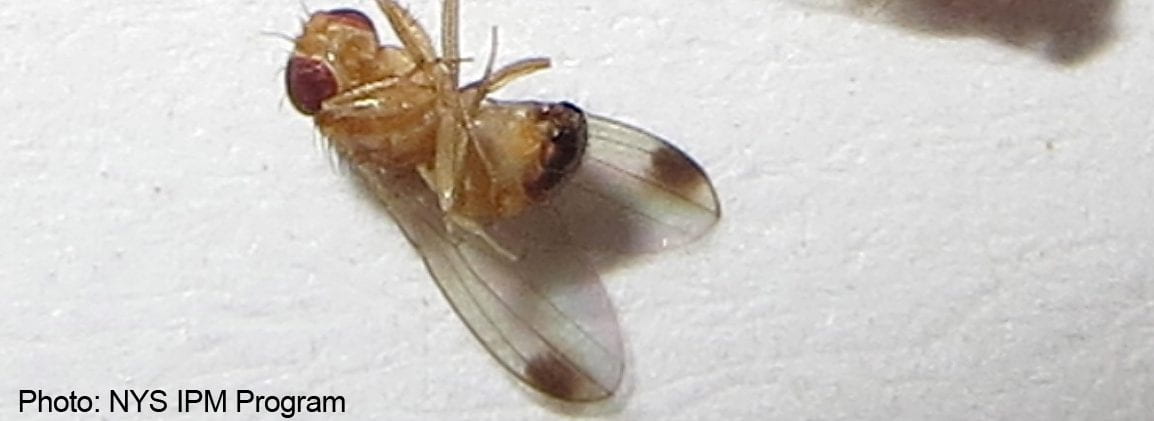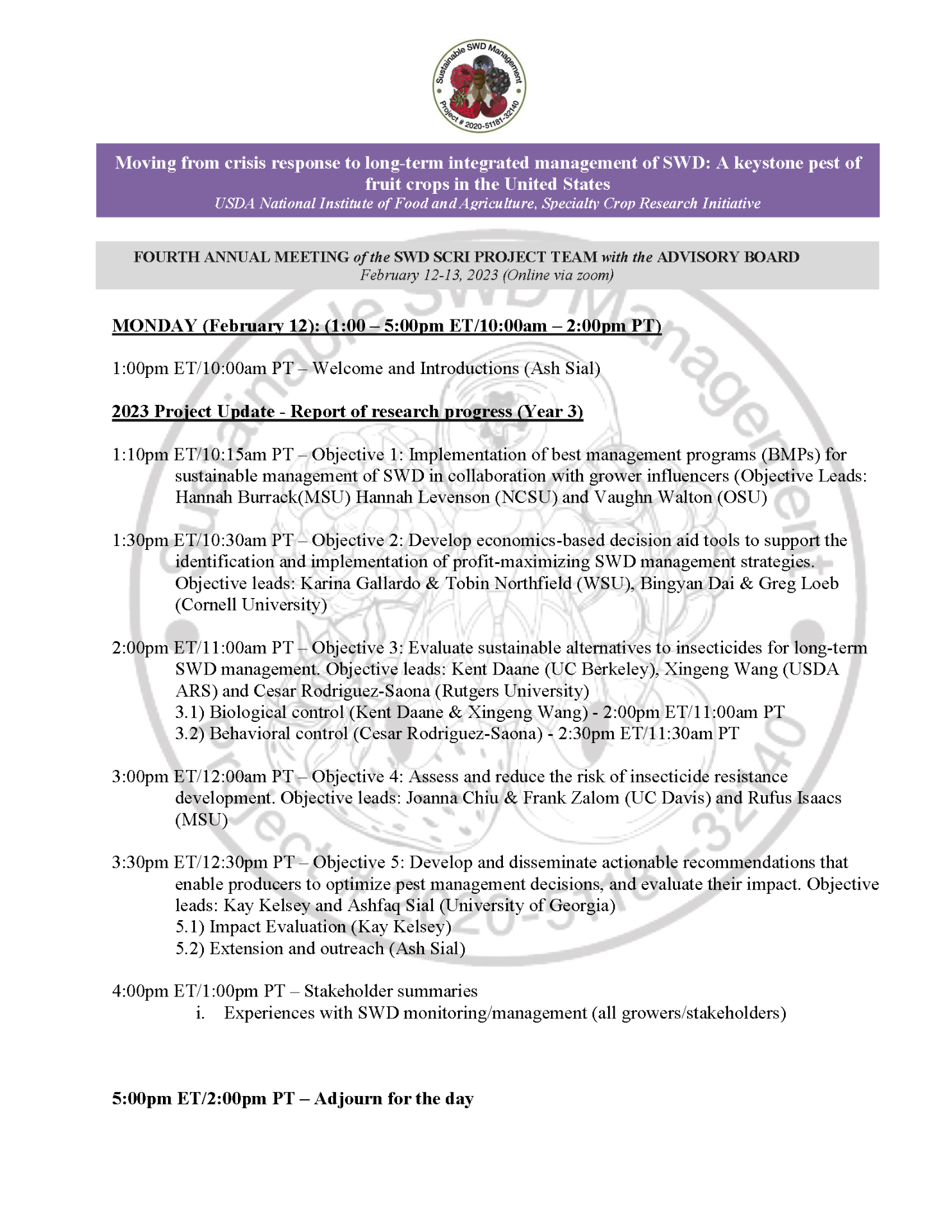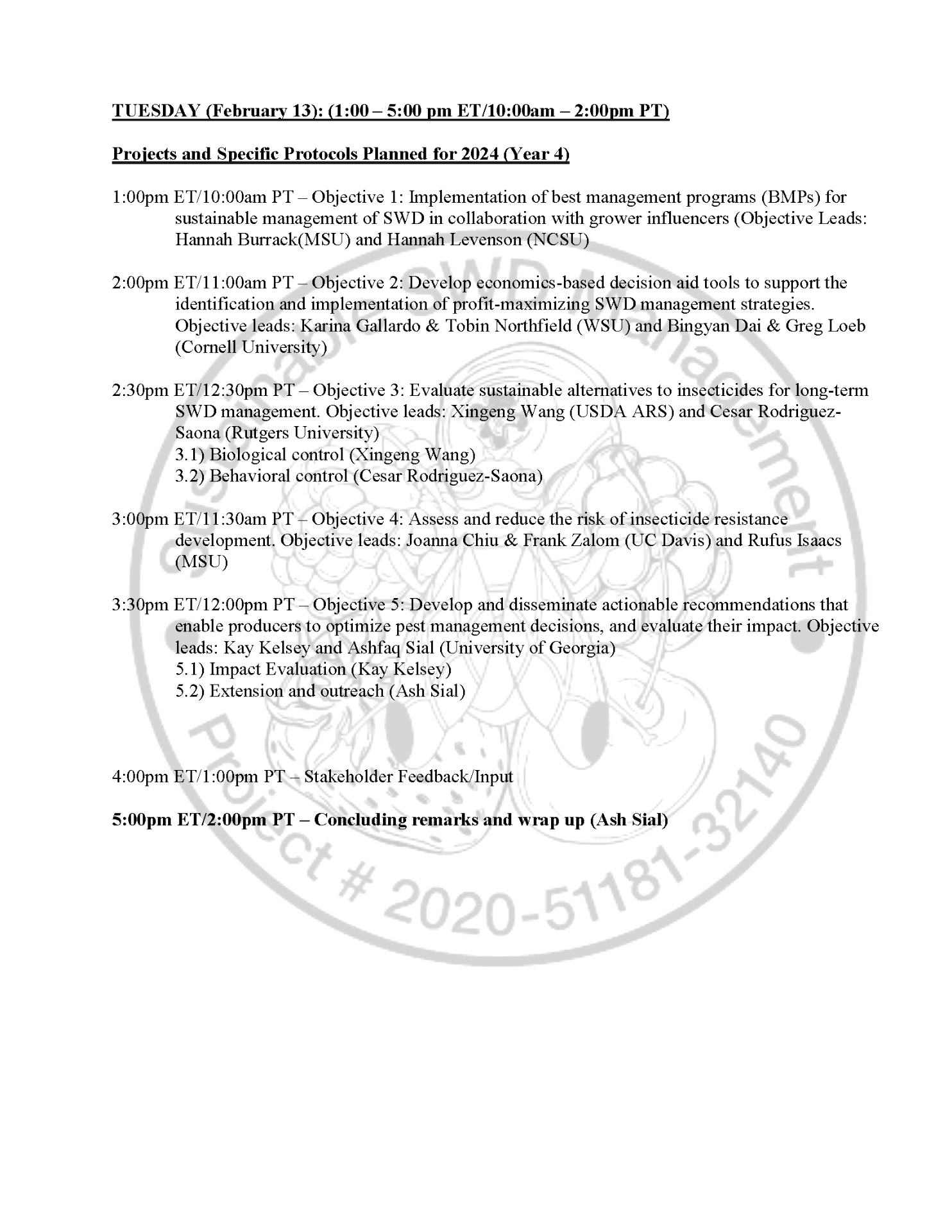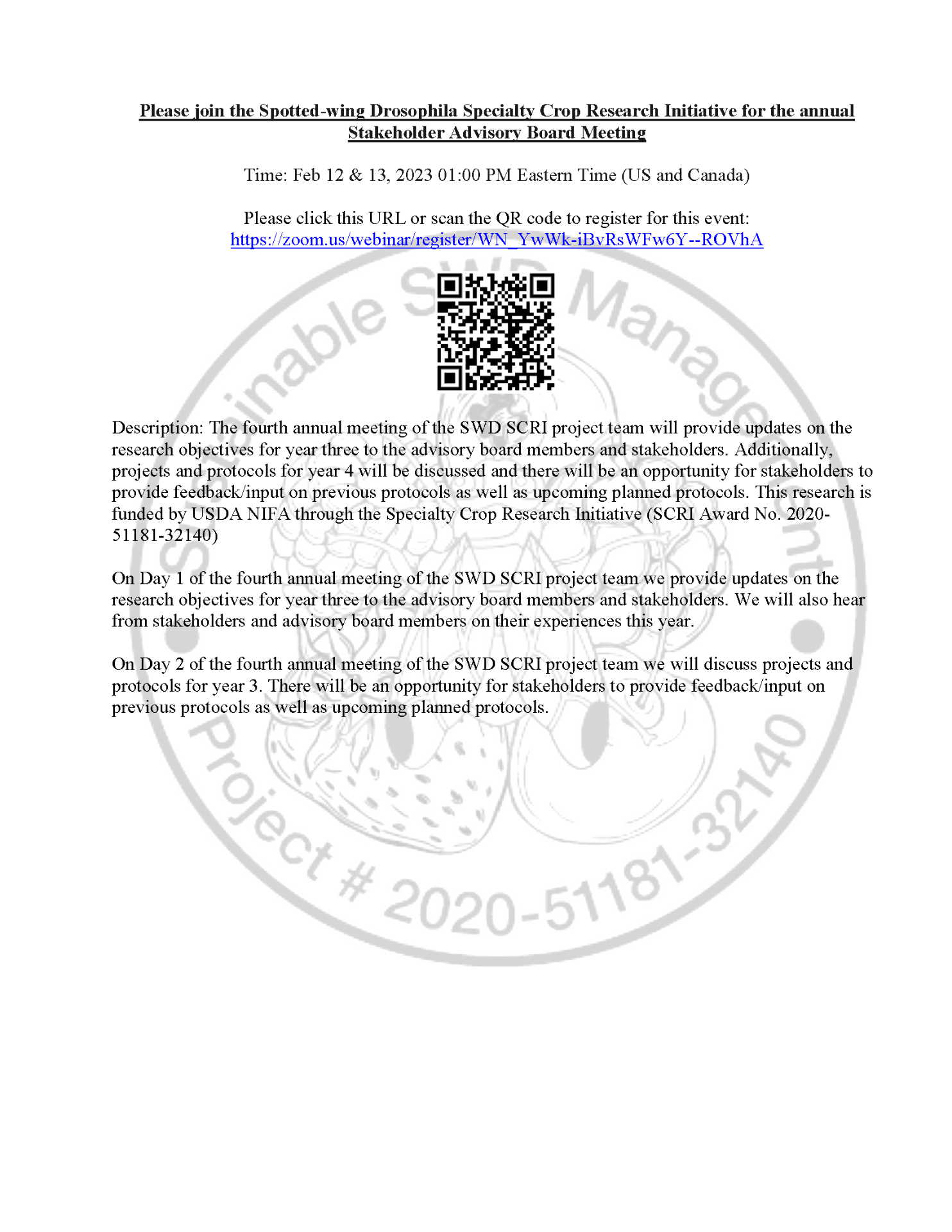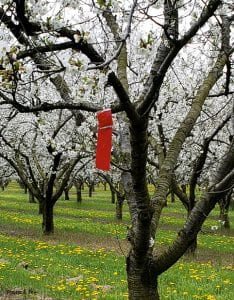Please complete this brief survey to help us understand industry needs and guide future SWD monitoring.
Are you monitoring for SWD (Spotted Wing Drosophila) on your farm? We'd like to know! Please complete this brief survey about your SWD monitoring. https://cornell.ca1.qualtrics.com/jfe/form/SV_2iBzQU9NpKO1WKO
Traps in the SWD monitoring network are located on commercial farms, and typically serviced by Cornell Extension Personnel or grower collaborators. In addition, some growers have begun servicing their own traps, with our guidance or from reading the online resources. This survey will help us understand berry industry needs and plan monitoring for future seasons. We appreciate you taking the time to help!
2023 Monitoring Results. In 2023, the SWD monitoring network included 118 monitoring locations in 24 counties, maintained by 18 individuals. First trap captures were reported from June 13-July 20, and sustained captures a week later (sustained capture = SWD detected at least two weeks in a row). This is considerably later than average; in many years, first capture occurs in mid-May, almost a month earlier! 2023 was a brilliant example of how monitoring can be used to delay pesticide applications until insects are present, saving time, labor, and materials.
Acknowledgements. I’d like to extend a huge thanks to Dr. Juliet Carroll and the many collaborators around NY state who have provided support for SWD in this trap comparison project for the past three years, as well as the monitoring network and blog since 2013!
2023 Collaborators:
Amy Edwards, Burdick Blueberries
Anya Osatuke, Harvest New York, CCE
Dan Gilrein, Suffolk County CCE
Don Gasiewicz, Wyoming County CCE
Elisabeth Hodgdon, ENYCHP, CCE
Elizabeth Tee, Lake Ontario Fruit Program (LOF), CCE
Gary Phelps, Gary’s Berries
James O'Connell, Ulster County CCE
Janet van Zoeren, Lake Ontario Fruit Program (LOF), CCE
Jared Dyer, Suffolk County CCE
Jennifer Staton, ENYCHP, CCE
Jonny Williams, Northstar Blueberry Farm
Laura McDermott, ENYCHP, CCE
Natasha Field, ENYCHP, CCE
Nick Hamilton-Honey, CCE
Support for this work was provided by the NYS Berry Growers Association, the NYS IPM Program, and the USDA NIFA CPPM EIP Award 2017-70006-27142.
Sustainable SWD Management swdmanagement.org/

